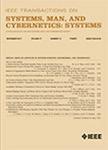版权所有:内蒙古大学图书馆 技术提供:维普资讯• 智图
内蒙古自治区呼和浩特市赛罕区大学西街235号 邮编: 010021

作者机构:Northwestern Polytech Univ Sch Comp Sci Xian 710072 Peoples R China Zhejiang Univ Sch Med Hangzhou 310000 Peoples R China Natl Sun Yat Sen Univ Dept Elect Engn Kaohsiung 80424 Taiwan
出 版 物:《IEEE TRANSACTIONS ON SYSTEMS MAN CYBERNETICS-SYSTEMS》 (IEEE Trans. Syst. Man Cybern. Syst.)
年 卷 期:2023年第53卷第1期
页 面:529-541页
核心收录:
学科分类:0808[工学-电气工程] 08[工学] 0811[工学-控制科学与工程] 0812[工学-计算机科学与技术(可授工学、理学学位)]
基 金:National Natural Science Foundation of China [61976178, 62076202] Open Research Projects of Zhejiang Laboratory [2022NB0AB07] Shaanxi Province Key Research and Development Program of China [2022GY-090, CAAIXSJLJJ-2021-041A] Doctor's Scientific Research and Innovation Foundation of Northwestern Polytechnical University [CX2022016]
主 题:Path planning Artificial neural networks Testing Semiconductor device modeling Probes Approximation algorithms Task analysis Attention mechanism (AM) coverage path planning (CPP) deep reinforcement learning (DRL) wafer probing
摘 要:Wafer probing is a critical process employed to measure the yield of wafer fabrication. The primary object of wafer probing is to find the defect grain on the wafer. After a full coverage check, there are always some suspected grains existing for further inspection. However, this second probing result could be affected by the shape of the probe card and the setting actions (path planning) of operators for grains randomly scattering on the wafer. Good grains can be damaged by reprobe actions, which decrease production performance and customer trust. In general, it also requires manpower to perform reprobing, which dramatically deteriorates the throughput of production. This article has studied this problem, and an adaptive coverage path planning (CPP) method for randomly scattering grains using an attention interface is proposed. The proposed randomly scattering waypoints method uses deep reinforcement learning (DRL) for automatic real-time path planning of the second detection. A soft attention interface accelerates the process with a less overlapped check. The experimental results demonstrate the efficiency of the proposed method in terms of less overlapping and steps, and this method learns a better CPP strategy for wafer probing than programmed paths and other RL-based methods.